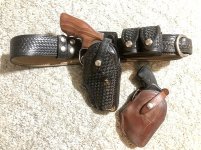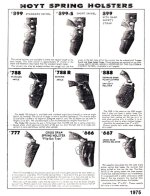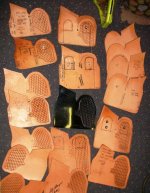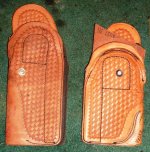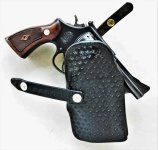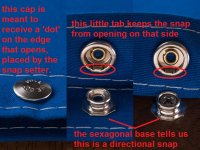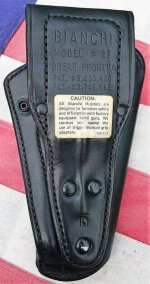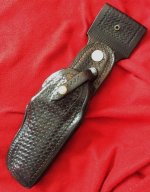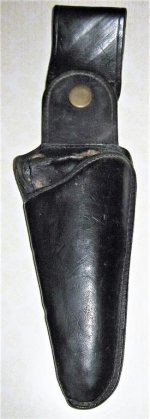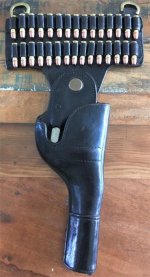I've had this holster for about 15-20 years, I think. Came across it again today and have been looking it over:



Note the markings on the back of the holster. W.C.P.D., at the top, clearly a police department. Under the logo and two patent numbers, "SW 66 4." I find it surprising that a specific model was imprinted, rather than simply "SW K 4." (That's a M10 HB in there.)
I am guessing that W.C.P.D. used 4" M66s and ordered for that model specifically from Hoyt, which then embossed them specifically for that model. I assume the '81" below the model number must be the year the WCPD's order for the holsters was fulfilled.
That sound right?
And I wonder what is with the two snaps — in the third pic only one is visible — on the back of the holster behind the belt loop?
The strap behind the hammer, holding the gun in the holster, can be released either by the snap on the strap on the front of the holster, or by the snap on the same strap behind the hammer (by pushing the strap it is attached to towards the body).
But I don't understand the function of the two snaps on the back of the holster behind the belt loop.
Anybody know?
I also think it interesting that the paper "Warning" label was never removed. It's too faded to read in its entirety but the first line says "the Holt holster is designed..." Second line ends with "...factory." Third line ends with "...Do NOT..." Fourth line is illegible. My guess is that the label says don't try to take the holster apart, or adjust the spring, which is set at the factory, as that will have adverse consequences.
I find it an interesting holster.
What do you guys think?



Note the markings on the back of the holster. W.C.P.D., at the top, clearly a police department. Under the logo and two patent numbers, "SW 66 4." I find it surprising that a specific model was imprinted, rather than simply "SW K 4." (That's a M10 HB in there.)
I am guessing that W.C.P.D. used 4" M66s and ordered for that model specifically from Hoyt, which then embossed them specifically for that model. I assume the '81" below the model number must be the year the WCPD's order for the holsters was fulfilled.
That sound right?
And I wonder what is with the two snaps — in the third pic only one is visible — on the back of the holster behind the belt loop?
The strap behind the hammer, holding the gun in the holster, can be released either by the snap on the strap on the front of the holster, or by the snap on the same strap behind the hammer (by pushing the strap it is attached to towards the body).
But I don't understand the function of the two snaps on the back of the holster behind the belt loop.
Anybody know?
I also think it interesting that the paper "Warning" label was never removed. It's too faded to read in its entirety but the first line says "the Holt holster is designed..." Second line ends with "...factory." Third line ends with "...Do NOT..." Fourth line is illegible. My guess is that the label says don't try to take the holster apart, or adjust the spring, which is set at the factory, as that will have adverse consequences.
I find it an interesting holster.
What do you guys think?
Last edited:

